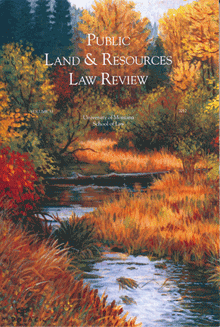EXECUTIVE SUMMARY
Deep ancestral and traditional connections tie many Native Nations to the federal government’s public lands. The removal of these lands from indigenous control, their acquisition by the federal government, and the federal government’s approach to their management are largely premised upon the erasure or marginalization of those connections. Both physically and legally, Indian tribes have been removed from the landscapes they occupied since time immemorial. Rather than centering, honoring, and using those connections, the current discussion of tribal co-management of federal public lands is mostly bereft of this full legal and historical context.
Compounding these limitations is the considerable discretion enabled by the applicable legal framework and exercised by public land management agencies. This discretion is most often used in ways that place Indian tribes in a reactive and defensive position. Furthermore, in exercising that discretion, federal public land management agencies regularly disassociate their land management activities from their interactions with tribes, viewing the former as a priority and the latter as an additional burden or only ancillary to their mission. In order to reconnect the management of public lands to the broader legal and historical context, these agencies must be compelled—through statute or Executive action—to work with tribes on a co-management basis, in the same manner as they are compelled to fulfill their other obligations and priorities in managing and protecting the lands for which they are responsible.
Furthermore, federal public land law generally provides to state governments and private interests broad powers and authorities not yet extended to Indian tribes. The intergovernmental dimensions of federal public lands management must more fully recognize the federal government’s fiduciary obligations to Indian tribes and include sovereign tribal governments. The common tools used in “cooperative federalism” can help inform the design of tribal co-management legislation and/or rulemaking
